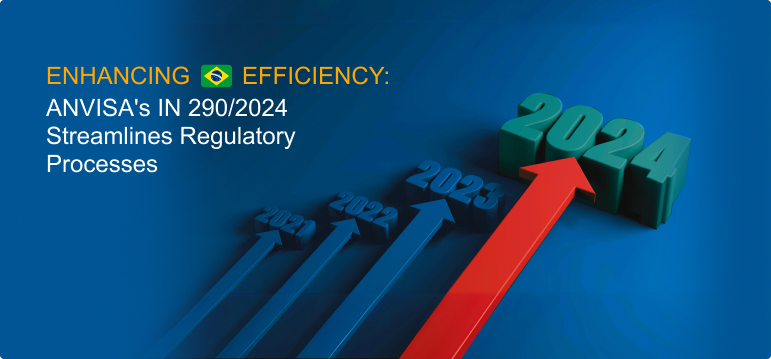Globalization and the rapid advance of new technologies have presented a major challenge to regulators worldwide. Highly complex regulatory developments and the globalized production chain have advanced much faster than the availability of financial and human resources in most regulatory authorities.
ANVISA currently has an average of 88,000 registered products, and with the growing demand from manufacturers in the Brazilian market, it became necessary to speed up the analysis queue to benefit not only the regulated sector but mainly patients in terms of the supply of high-quality medical devices. ANVISA has therefore recently published IN 290/2024 which through the regulatory reliance mechanism, aims to take advantage of analyses carried out by the Equivalent Foreign Regulatory Authority (EFRA) to speed up the process of obtaining new registrations.
The legal milestone relating to optimized analysis procedures came with the publication of RDC 741/2022, which provides general criteria for the admissibility of analysis. It stipulates that both the requirements for defining EFRA will be defined in an appropriate regulatory document, in this case IN 290/2024.
The regulatory reliance process originated from discussions held with ANVISA and its partner agencies, originating from IMDRF, namely:
| USA: US Food and Drugs Administration (US FDA) |
| Heath Canada (HC) |
| Australia Therapeutic Goods Administration (TGA) |
| Japan Ministry of Health, Labour and Welfare (MHLW) |
For a registration application to be eligible for optimized analysis by ANVISA, it must meet the following requirements:
1) The device must be authorized by at least one of the above-mentioned EFRAs.
2) The documentation proving registration issued by the EFRA must mention the device being essentially identical to the one intended to be registered, as well as information on the indications for use / intended use and manufacturers, i.e., the product’s Instructions for Use.
Note: Changes to devices that keep the technical specifications, indications and intended use, manufacturer, manufacturing process, and results of safety and performance studies unchanged will be accepted to prove the device is essentially identical.
Ex: power cable with plug adapted to the Brazilian standard
The request for an optimized analysis must be made using a supplementary application – in other words, the applicant must already have a registration application in course – using the following documentation:
– Declaration available in the Annex to IN 290/2024 and in the Application System
– Proof of registration or authorization issued by one of the EFRAs, mentioning the essentially identical device, as well as indications of use and manufacturer. This document must be apostilled or consularized.
– Instructions for Use for the product adopted and in force in the EFRA’s jurisdiction.
Note: According to ANVISA regulations, all documents not in English, Spanish or Portuguese must be accompanied by a sworn translation.
The request for analysis via the optimized route is not a guarantee that ANVISA will comply. After analyzing the request for an amendment, ANVISA may choose to follow the ordinary procedure, i.e. analyzing the complete registration application documentation. In this case, ANVISA sends the applicant a communication informing them of the decision to follow the ordinary analysis procedure.
It is important to note that the adoption of the optimized analysis procedure does not imply a change in the chronological order of the petitions, i.e.the analysis queue will remain the same; the speed will be due to the fact that the complete documentation will not be analyzed, since the reliance mechanism will be adopted. With this procedure, ANVISA expects to reduce the analysis time by 30%.

